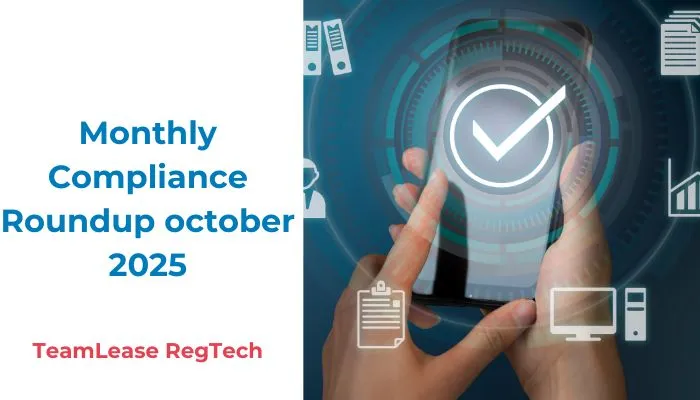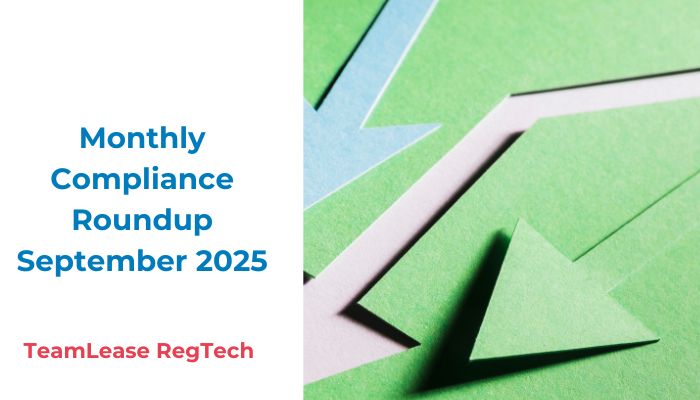Since the implementation of economic reforms in 1991, our economy has been steadily ascending to unprecedented heights. With a GDP ranking fifth globally, our economy is projected to reach US$ 10 trillion by the conclusion of the current decade. A significant driver of this expansion has been the presence of micro, small, and medium enterprises (MSMEs). Presently, 63 million and more MSMEs employ more than 110 million people. Upon further investigation, it is discovered that micro businesses comprise 99% of the sector and employ 97% of the workforce. In addition, 51% of these enterprises are situated in rural regions, an aspect that augments their significance immediately. Therefore, it is essential to gain an understanding of the challenges they face.
MSMEs in India need to navigate a complex compliance ecosystem to conduct business. They struggle to navigate regulatory compliance’s many categories (labour, secretarial, EHS, commercial, industry-specific, finance & taxation, general), types (licences & registrations, registers & records, audits, and examinations), and levels (central, state, and municipal). All this without considering the dynamic regulatory landscape, with 5,900+ regulatory updates in FY 2022-23. Keeping track of compliances and over 2,000 government website notifications, circulars, directions, and notices is overwhelming, and compliance filings are at risk. Non- compliance can result in financial penalties, but more serious violations can land you in prison for 1 month to 3-5 years.
MSME expansion into the formal sector is accompanied by an annual obligation to comply with over 400 compliance standards promptly. Consider an MSME that is engaged in the manufacturing sector. Registration certificates, act summaries, standing orders, social security regulations, safety signs, hazardous substance labels, and equipment identification marks are among the fifty display requirements that a unit must adhere to. Furthermore, it is mandatory for the employer to uphold a minimum of forty registers in diverse formats. Furthermore, the intricacy increases as the organisation is obligated to uphold and renew an estimated thirty licences, registrations, and authorisations from various governmental agencies. These include, but are not limited to, vehicle registrations, EPF and ESI registrations, land registrations, trade licences, environmental clearances, factory licences, and municipal corporation electricity, water, and sewerage connections. These requirements and figures differ by industry or sector.
As an illustration, an MSME engaged in the production of pharmaceuticals is required to comply with 998 regulations and acquire a minimum of 70 one-time registrations, approvals, and licences. Additionally, the organisation must comply with sector-specific regulations, including
submitting quarterly returns detailing receipts, import, sale, consumption, or export of controlled substances as defined by the Narcotic Drugs and Psychotropic Substances Act of 1940.
By adopting contemporary digital tools, small and medium-sized enterprises (MSMEs) can enhance their likelihood of meeting compliance obligations and circumvent fines and penalties. Consistent analytics, personalised checklists, real-time regulatory updates, automatic notifications and reminders, and automatic notifications distinguish compliance technology from its manual predecessor. Cashless, paperless, presenceless, ad hoc, manual, and human- dependent compliance processes are giving way to paperless, web-based, and presence- independent systems.
The advancement of technology will play a pivotal role in facilitating the realisation of the demographic dividend in India. Utilising the potential of the interdependence between humans and technology is essential to benefit fully from our “Amrit Kaal.” By 2047, one in every five individuals of working age will reside in India. We stand at a critical juncture in history, from which the country will initiate its trajectory towards attaining an economy worth $40 billion. The nation’s genuine growth potential can be unlocked by harnessing the capabilities of micro, small, and medium enterprises (MSMEs).
You might also be interested to read: Building a Culture of Compliance in India’s Growth Story






